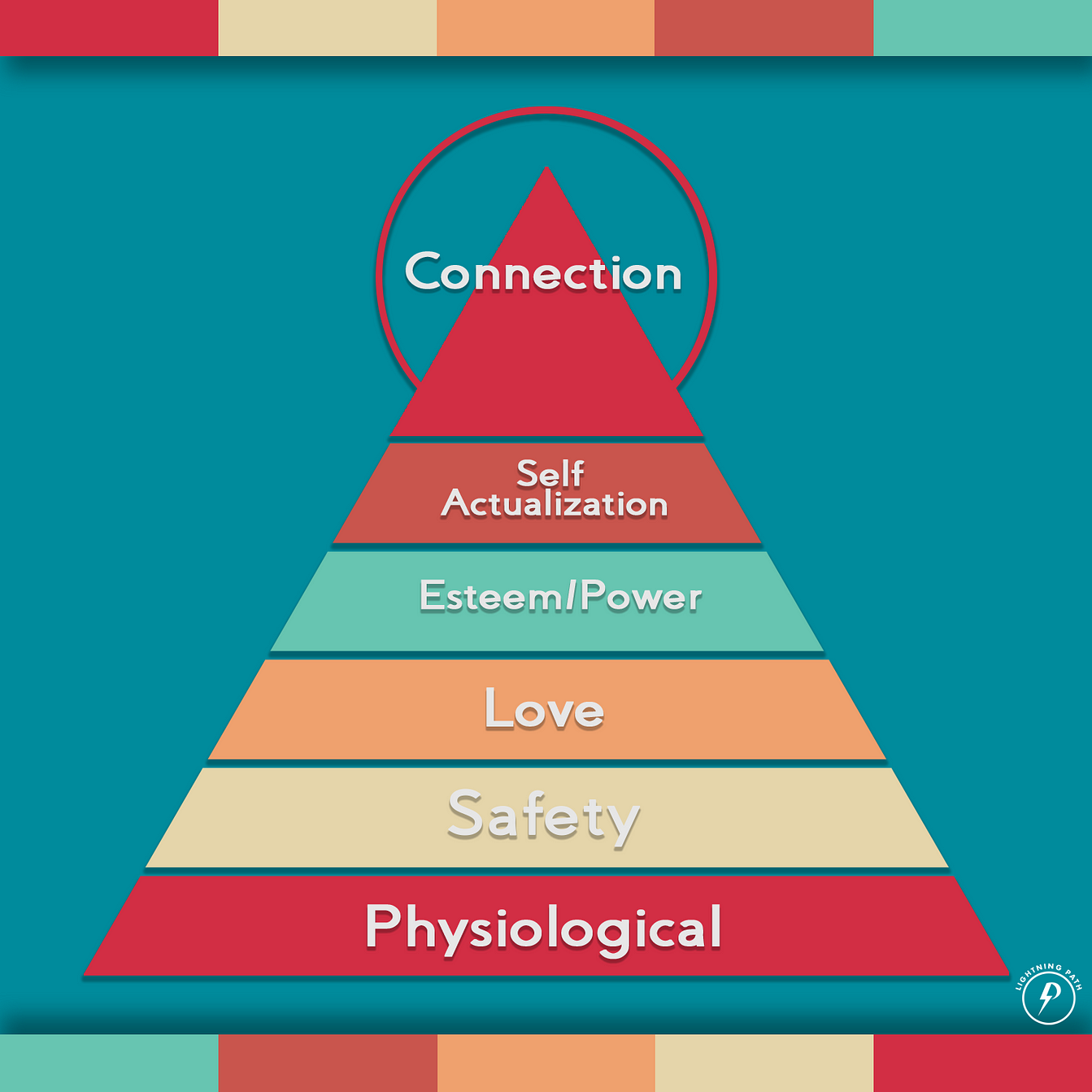Did you know, Abraham Maslow, the psychologist who proposed the original Hierarchy of Needs, actually suggested two hierarchies of need?
It is true.
Maslow’s first hierarchy, which everybody knows about, and which appears in all the introductory psychology texts of the world, was the Hierarchy of Basic Needs. This hierarchy, which he introduced in his 1943 article “A Theory of Human Motivation,” started off with just five categories of need, the physiological, safety, love, esteem, and self-actualization needs.
The physiological needs were your needs for food, water, air, exercise, and so on. The safety needs were your needs for safe and stable environments. Safety included the need for financial security (a good job) and physical security (a house where all your bills were paid). The love needs were your need for unconditional love, support, intimacy, and belonging. The self-esteem needs were your needs to feel good about yourself, to have status, recognition, and respect, and to feel powerful and efficacious in the world. Finally, you had your need for self-actualization. According to Maslow, this was your need to be your Self, to be who you truly were deep down inside. As he said in his original article.
A musician must make music, an artist must paint, a poet must write, if he is to be ultimately happy. What a [person] can be, [they] must be. This need we may call self-actualization. (Maslow, 1943).
Later on, Maslow (1962, 1969) added a sixth need, “transcendence” to the mix. “Transcendence can be a confusing word and so, for reasons I’ll elaborate on at a later day, I’ll just use the word connection. As humans, we have a need for transcendence, or connection. You can see Maslow’s updated and complete hierarchy of basic needs in the illustration below.
Maslow’s Hierarchy of Basic Needs

Maslow’s second hierarchy of needs, which he also proposed in his 1943 article, but which psychologists and others almost always ignore, is the Hierarchy of Cognitive Needs. In this second hierarchy, Maslow placed two cognitive needs, our need to know and our need to understand.
Maslow defined the need to know as the need to “be aware of reality, to get the facts, to satisfy curiosity…to see rather than to be blind” (Maslow 1943:385). For Maslow, the need to know was a driving need. As he said, “even after we know, we are impelled to know more and more minutely and microscopically on the one hand, and on the other, more and more extensively in the direction of a world philosophy, religion, etc” (Maslow 1943:385. Italics added).
Maslow defined the need to understand as the need to understand the reality that we came to be aware of. According to Maslow, it was not enough just to know things, to accumulate mere facts. We also had to understand these facts. As he said,
…the facts that we acquire, if they are isolated or atomistic, inevitably get theorized about, and either analyzed or organized or both. This process has been phrased by some as the search for ‘meaning.’ We shall then postulate a desire to understand, to systematize, to organize, to analyze, to look for relations and meanings (Maslow 1943:385. Italics added).
Maslow’s hierarchy of cognitive needs is illustrated below.
Hierarchy of Cognitive Needs

Maslow’s Hierarchy of Cognitive Needs
Like the hierarchy of basic needs, Maslow felt the human needs to know and understand were powerful and important needs. Maslow directly suggested that these needs be placed in a second, related, hierarchy of needs. As he said, “once these desires are accepted for discussion, we see that they too form themselves into a small hierarchy in which the desire to know is prepotent over the desire to understand” (Maslow 1943:385).
The Hierarchy of Cognitive needs is no doubt important, and it is a curious question why this second hierarchy of needs never gets discussed along with the first. Maybe it is because Maslow does not spend much time in his seminal article talking about it, and so psychologists have just missed it all these years. Maybe it is because inclusion of this second hierarchy has uncomfortable, even revolutionary, implications for self and society (Sosteric and Ratkovic 2018).
Who knows, and who cares, really. In my view, it is a waste of energy to focus in on the oversight. What is important is to bring into collective awareness the existence of this second important hierarchy of cognitive needs, to integrate it into our understanding of human development, and to explore its implications for human health and well-being.
References
Maslow, A. H. 1943. “A Theory of Human Motivation.” Psychological Review 50(4):370–96.
Maslow, A. H. 1962. “Lessons from the Peak-Experiences.” Journal of Humanistic Psychology 2(1):9–18.
Maslow, A. H. 1969. “The Farther Reaches of Human Nature.” Journal of Transpersonal Psychology 1(1):1–9.
Sosteric, Mike and Gina Ratkovic. 2018. “What Does It Mean to Be Human: Abraham Maslow and His Hierarchies of Need.” (https://www.academia.edu/35635479).
Mike Sosteric (Dr. S.) |
|
|
Just another loud mouth sociology professor, teaching sociology courses at Athabasca University. Check me out here at the Socjourn, over there at The Conversation and at academia.edu. |

